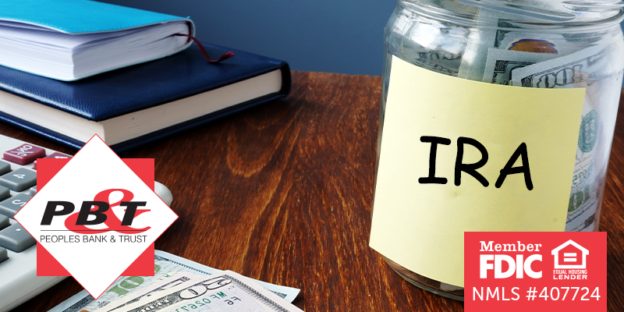IRAs can be confusing and even seem unnecessary to talk about for some, especially if retirement still seems lightyears away. Allow us to answer some of the most common questions people have about IRAs:
Q: Am I allowed to contribute to an IRA if I have a retirement plan through work?
A: Yes, as long as you meet the IRA’s eligibility requirements ‐ even if you participate in a 401(k) plan at work.
Q: What is the contribution limit?
A: The contribution limit is annual, so the amount you are allowed to contribute can change from year to year. For 2019, 2020 and 2021 it is $6,000 (or $7,000 if you’re age 50 or older). Your contribution limit might also change based on your income and filing status.
Q: What’s the difference between a Roth IRA and a Traditional IRA?
A: The main difference is that with a Roth IRA you contribute after‐tax dollars, so your money grows tax‐ free. A Traditional IRA, on the other hand, includes contributing pre‐tax dollars so withdrawals are taxed.
Q: How do I know if either a Roth or Traditional IRA is better suited for me?
A: If you expect to be in a higher tax bracket when you start taking withdrawals, a Roth IRA is best. If you expect to be in the same or lower tax bracket when you start taking withdrawals, a Traditional IRA is best. We recommend consulting with your tax advisor to determine which IRA option is the right choice for you.
Q: What are the penalties for withdrawals?
A: In most cases, withdrawing IRA contributions is penalty‐free, but if you withdraw earnings from an IRA, you may owe income tax and a 10% penalty.
Q: What is a spousal IRA?
A: People often wonder what they can do in a situation where there’s a working spouse and a non‐ working spouse. A spousal IRA allows the employed spouse to contribute to an IRA of the non‐working spouse. This can as much as double the family’s retirement savings.
Q: Can I contribute to an IRA if I only work part time?
A: Yes, it doesn’t matter if you’re a teenager working a summer job or have worked your whole life and are officially retired – you can still contribute to an IRA.
Q: What is a Roth conversion?
A: A Roth conversion allows you to withdraw from a 401(k) or a traditional IRA and convert it to a Roth IRA. This is smart for individuals who want their money to grow tax‐free.
We’ve only just scratched the surface of what there is to know about IRAs, but we’re always here to help if you have further questions. Contact us or visit our website to learn more about IRAs and how they can be beneficial to your financial future.
Peoples Bank & Trust Co.
Member FDIC
Equal Housing Lender


